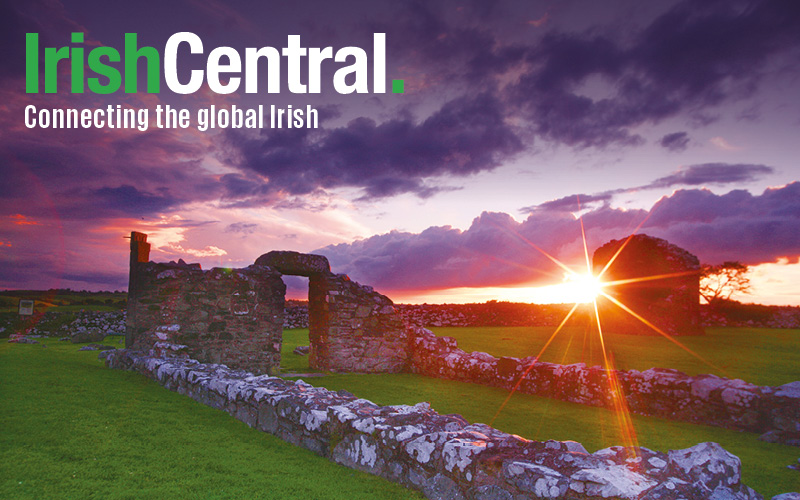IIIC Welcomes Irish Outreach Coordinator
The Irish International Immigrant Center (IIIC) is very pleased to welcome its newest staff member, Iarla O’Hallmhurain, to the position of Irish Outreach Coordinator. Iarla hails from the West Coast of Ireland in the Burren. Having traveled widely in the U.S. since he first came to America in 2007, most of the time he lived in the Dorchester, Cambridge, and Somerville areas of Greater Boston.
Iarla is looking forward to being involved in many of the exciting IIIC events coming up this Fall including the Together for Hope Suicide Prevention Walk on October 4th and the Solas Awards celebration on October 30th. Although very familiar with the City, Iarla hopes to be getting out and about to meet with many of the younger members of the Irish community to acquaint them with the variety of services that the IIIC provides.
Immigration News
Have You Ever Been “Inspected”?
Q: I was filling out an application form for US Citizenship and Immigration Services, and there was a question asking whether I had been “inspected” by an immigration officer when I last entered the US. Like every other time, I just got off the plane, stood in line, showed my passport and had it stamped, had my fingerprints and a digital photo taken, answered a few questions, and was on my way. Doesn’t “inspection” mean something more elaborate than that?
A: You were in fact inspected by US Customs and Border Protection (CBP). The process you described is what some 98% of visitors to the US experience. It is officially known as “primary inspection” and is the routine treatment that visitors receive. The remaining roughly 2% are subjected to what is known as “secondary inspection.” This is what happens when the CBP officer at the primary inspection point thinks there may be a problem with the admissibility of the visitor, based on incomplete travel documents, a name match with a government law enforcement database, or the like. In addition, a small number of visitors are selected randomly for secondary inspection.
With secondary inspection, the visitor is taken to an area separate from the primary inspection area, sometimes a private room, and questioned and possibly searched. (This is probably what most people think of when they hear the word “inspection.”) After the secondary inspection, some 90% of those involved are, in fact, admitted to the United States.
So remember: Any travelers coming through US ports of entry in the normal way, with no problems, have in fact been “inspected” by immigration authorities.
CBP has a fact sheet on the inspection process and the reasons for it. It points out that travelers who believe that they have been mistreated by CBP, or delayed or denied entry for an inappropriate reason, may file a report online at http://www.dhs.gov/trip. We suggest that anyone contemplating filing such a report contacts us first to determine whether doing so makes sense in a particular case.
More information on the inspection process and the functions of CBP can be found on their web site, www.CBP.gov.
For further information, visit one of our weekly legal clinics for a free, confidential consultation with an immigration lawyer.
Disclaimer: These articles are published to inform generally, not to advise in individual cases. Areas of law are rapidly changing. US Citizenship and Immigration Services and the US Department of State frequently amend regulations and alter processing and filing procedures. For legal advice, seek the assistance of IIIC immigration legal staff.
Labor Day Originated by Irish American McGuire or Maquire?
Labor Day has come to be celebrated by most Americans as the unofficial end of the summer. It is also a yearly national tribute to the contributions and achievements of the men and women of the American labor force. In 1894, the United States Congress unanimously voted to approve Federal legislation that made Labor Day a national holiday. Although there are two schools of thought as to who deserves the credit for its creation, one thing is certain – the “father” of Labor Day was an Irish American.
Generally recognized as having “fathered” Labor Day, Peter J. McGuire (1852-1906) was the founder of the United Brotherhood of Carpenters and Joiners of America and co-founder of the American Federation of Labor. He was one of the most remarkable figures in the history of the American labor movement in the nineteenth century. This son of Irish immigrants was born in New York City and quit school at age 11 to work when his father went off to fight in the Union Army during the Civil War. While still working, McGuire attended free night classes at Cooper Union where he met Samuel Gompers and other young radicals.
McGuire worked tirelessly to keep the Carpenters Union alive in the early years, and his efforts led to the eight-hour workday, wages that more than doubled and the founding of the American Federation of Labor.
A second school of opinion believes that it was Matthew Maguire (1855-1917), a machinist and a leading figure in the Central Labor Union of New York, who first proposed the holiday. Matthew Maguire was born just before his Irish parents' ship entered the Port of New York. He was apprenticed to a machinist at age 14 and later led a successful strike of machinists and blacksmiths for shorter hours and higher wages. In 1882, he helped organize the Central Labor Union of New York and led more than 5,000 workers in the first Labor Day parade.
The “paternity” battle over the founding of the Labor Day holiday continues but whether it was McGuire the carpenter or Maguire the machinist, suffice it to say that it was because of the combined efforts of these two Irish Americans that we have a chance, at the end of every summer, to pause and reflect upon the debt owed to generations past which built the country we live in today.
Quote of the Week
“When you look for the good in others, you discover the best in yourself.” -Martin Walsh




Comments